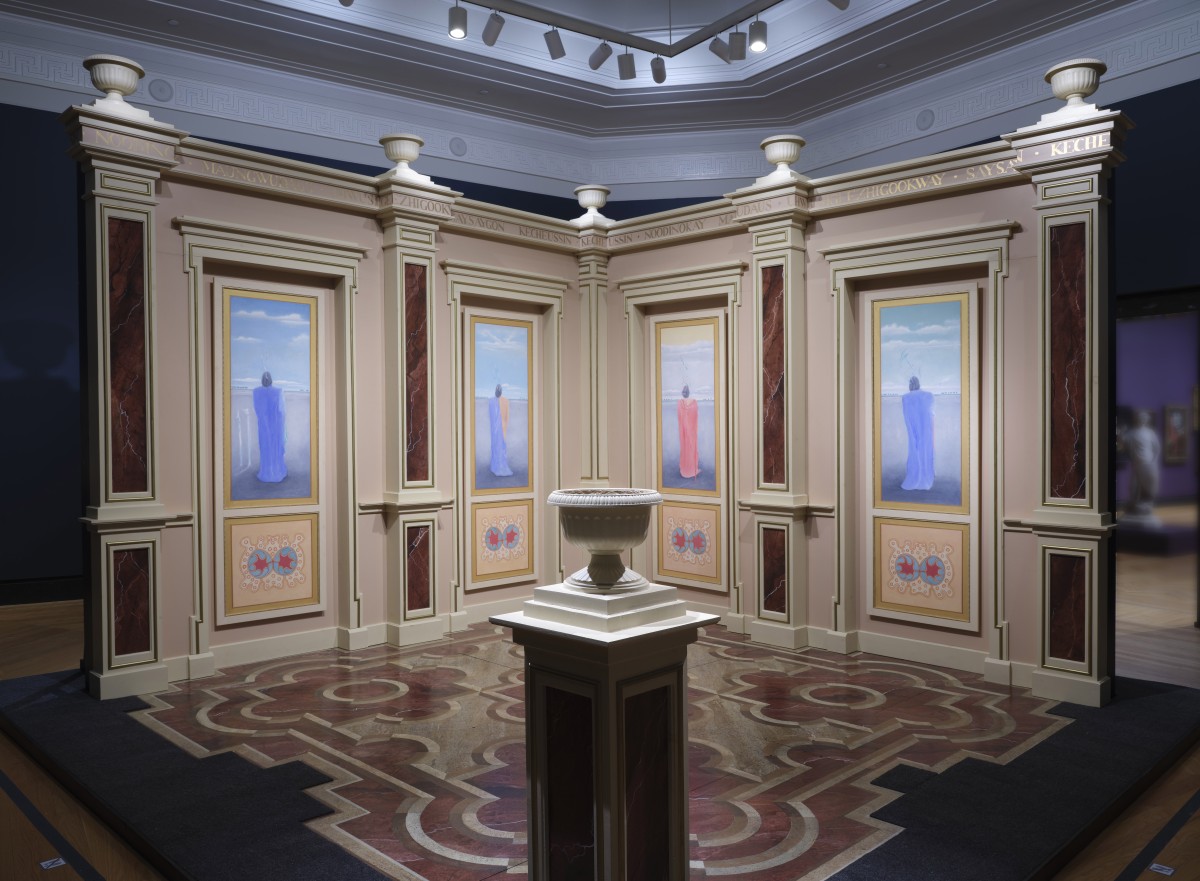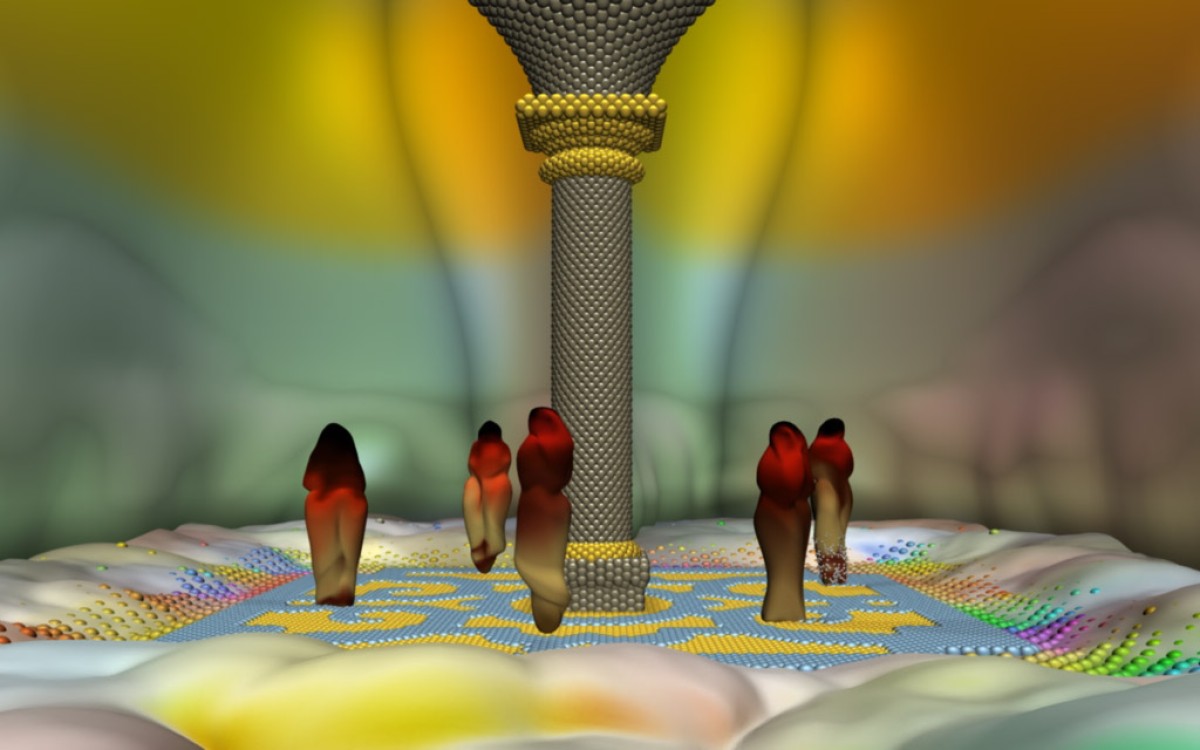Long way home
Ahead of Robert Houle’s major solo retrospective, go back in time with his multimedia intervention Paris/Ojibwa (2010) and witness the figurative return of a Michi Saagig dance troupe.

Robert Houle. Paris/Ojibwa, 2009-2010. Multi-media installation: painted plywood, 4 panels oil on canvas, video projection and sound component, Installed: 358 × 488 × 488 cm. Gift of Robert Houle, 2020. © Robert Houle 2020/3. Installation view, Reuben Wells Leonard Rotunda, Art Gallery of Ontario, 2021. Photo: AGO
The year was 1845. Toronto, then a muddy city of some 30,000 people, had just installed gas streetlights. In the Legislative Assembly, the Bagot Commission was recommending that separating Indigenous children from their parents was the best way to assimilate them into Euro-Canadian culture. The US Congress had just passed a law approving the annexation of Texas from Mexico. And in France, King Louis-Phillippe I was witnessing a performance by a troupe of Michi Saagig (Mississauga Anishinaabeg) dancers.
Fast forward to 2006 and renowned Saulteaux artist Robert Houle is in Paris, completing a residency at the La Cité des Arts. While in the Louvre Museum, he discovers a drawing by the French Romantic painter Eugene Delacroix, entitled Cinq etudes d’Indiens (1845), documenting the dance troupe’s performance.
Inspired by the drawings and the events that led to it, in 2010, at the Centre culturel canadien Paris, Houle debuted his renowned multimedia installation Paris/Ojibwa, “a reclamation” he said at the time, drawn from this “Anishinaabe history, which speaks of healing from the ravenous gaze of pending disappearance.” This work, thanks to the artist, is now part of the AGO Collection.
The AGO is built on the traditional lands of the Michi Saagig peoples, and the installation of Paris/Ojibwa in the Rueben Wells Leonard Rotunda, part of the European Galleries on Level 1, marks a powerful healing gesture. The installation invites visitors into a deconstructed room, part 19th-century Paris Salon, part contemporary intervention. Dominating the space is a recreation of a Salon, replete with faux marble floors and decorative moldings. The type of place where the King of France himself might entertain. But above the wainscotting, four painted figures stand silently, their backs turned to the viewer, their eyes facing east. These painted figures — a shaman, a warrior, a dancer and a healer — are each cast in a different monochromatic colour. They turn their backs to the cold floor upon which they would have danced and instead look homeward. Above their heads, painted in gold, are the names of the dancers.
As part of the reclamation effort, the sounds that fill the Rotunda and this dance floor are not those of harpsichords or violins, but of a contemporary pow-wow, courtesy the Kicking Women Singers. And behind the walls of this supposedly stately room, like a portal into a different world, a digitally animated video loops, depicting figures emerging from the landscape to perform a jingle dress dance around a column. Commissioned by Houle, this video, entitled uhnemekeka (2010), was created by Hervé Dagois and is part of the installation, here presented alongside two other works by Houle, Warrior à la Buren (2020) and Warrior Resting on Map of Lutetia (2010). The latter, done in graphite on an antique map of Paris, is positioned directly opposite a selection of works by Delacroix from the AGO Collection. While not the works that specifically inspired Houle, Delacroix's works are nonetheless similar in their approach - depicting non-Western peoples with an equal measure of curiosity and exoticism.
A powerful intervention on view through summer 2022, Paris/Ojibwa marks the figurative homecoming of these Michi Saagig dancers, through poetry and the powerful magic of art. Robert Houle: Red is Beautiful opens December 3. Stay tuned to AGOinsider for more details and exciting behind-the-scenes stories.
Supporting Sponsor
Supporting Sponsor
Contributing Sponsor
Contributing Sponsor
Generous Support
Generous Support
Media Partner
Media Partner
The exhibition tour is supported by
The exhibition tour is supported by


